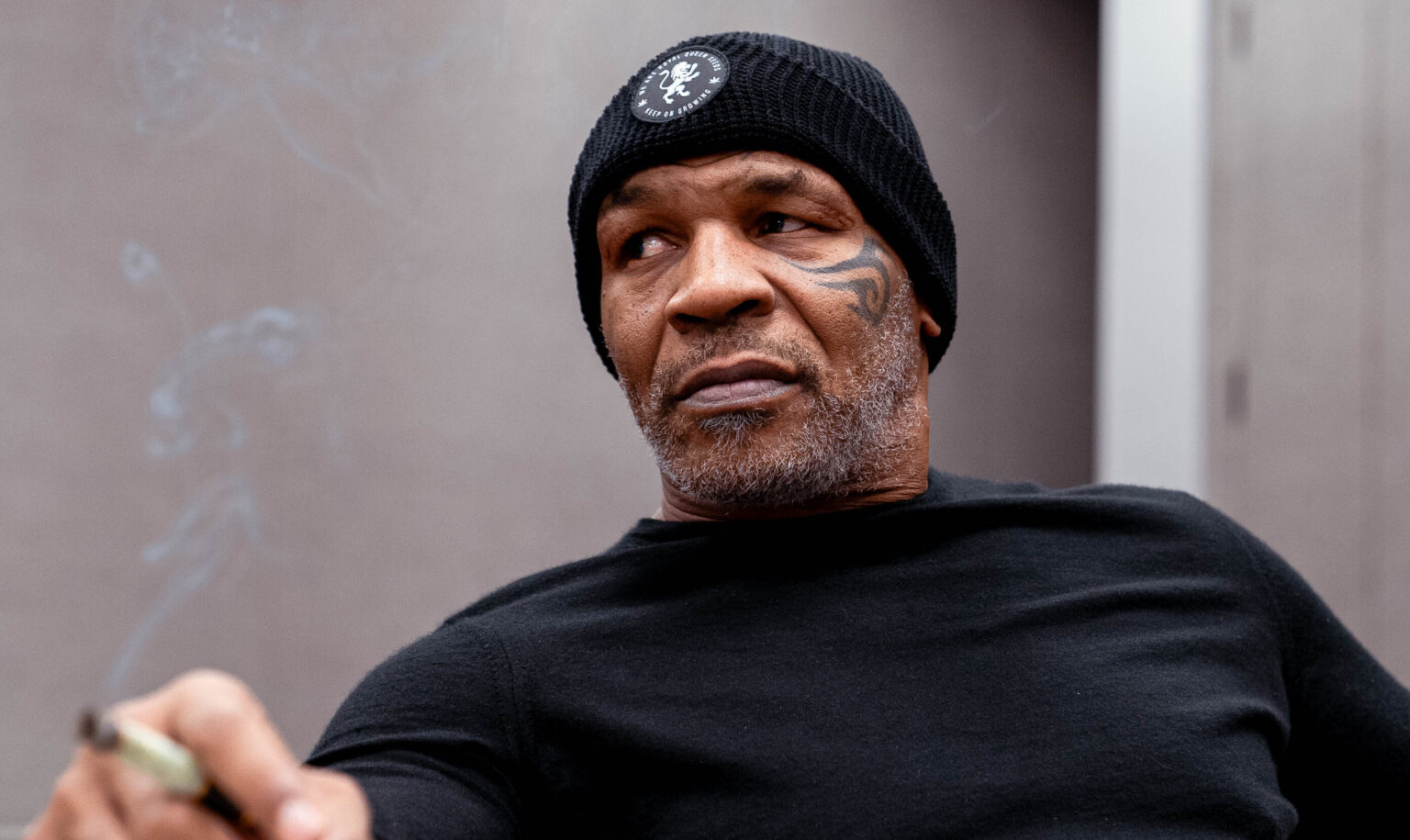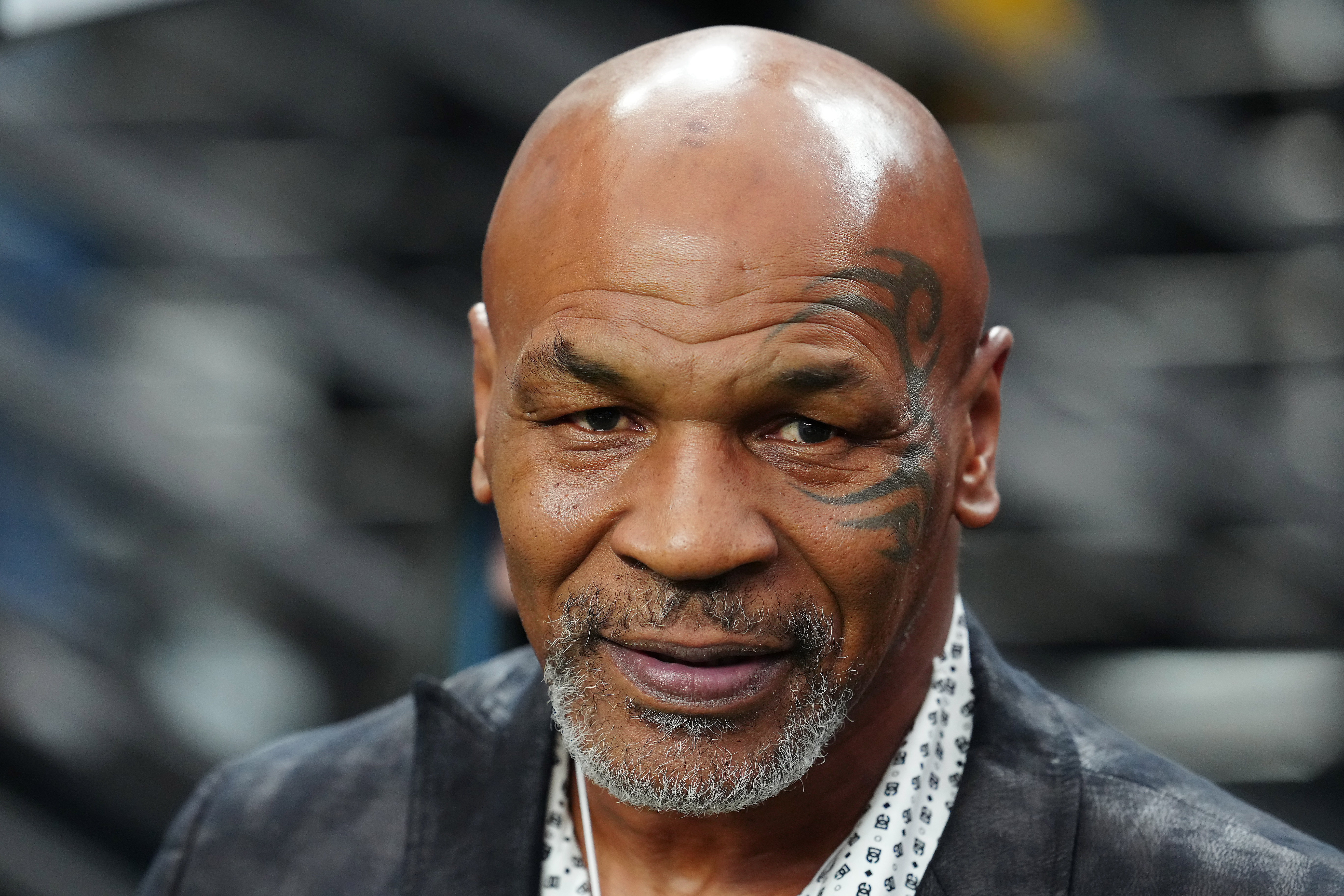How Much Did Mike Tyson Weigh At The Age Of 16? Unpacking A Teenage Phenomenon
Have you ever wondered about the raw power and physical presence of a future champion, especially during their formative years? It's a question many fans and sports enthusiasts ponder, especially when thinking about legendary figures. For someone like Mike Tyson, whose impact on boxing was, you know, truly immense from a very young age, his early physical development holds a lot of interest. People often ask, quite naturally, how much did Mike Tyson weigh at the age of 16?
This particular question really gets at the heart of his incredible journey. We're talking about a time when most teenagers are still figuring things out, yet he was already building the foundation for what would become an iconic career. His physical build and strength at such a tender age were, in a way, almost unheard of, setting him apart from his peers and, frankly, from many seasoned fighters.
Understanding his weight at 16 gives us a glimpse into the sheer dedication and natural gifts that shaped him. It helps us appreciate the kind of rigorous training and discipline he was already undergoing, preparing him for the boxing world's brightest lights. So, let's take a closer look at this fascinating aspect of his early life, because it tells a pretty compelling story about a young man destined for greatness.
Table of Contents
- Biography: The Formative Years of a Legend
- The Answer Unveiled: Tyson's Weight at 16
- The Context of His Early Physique: Training and Development
- Weight Classes and Amateur Boxing: The Teenage Years
- The Evolution of Iron Mike: Weight Changes Through His Career
- Impact of Early Weight on Fighting Style
- FAQs About Mike Tyson and His Early Career
Biography: The Formative Years of a Legend
Mike Tyson's story begins in Brooklyn, New York, where he was born on June 30, 1966. His early life was, shall we say, a bit rough around the edges, marked by challenges and a difficult upbringing. He found his way into boxing through a reform school, and that's where his natural talent for the sport really started to show itself. It's quite a compelling transformation, actually, when you think about it.
Under the guidance of legendary trainer Cus D'Amato, Tyson began to hone his skills, developing that unique peek-a-boo style that would become his signature. D'Amato saw something truly special in the young Mike, not just raw power, but a keen mind for the sport. This period was, in some respects, the making of the fighter we all came to know, a time of intense learning and physical growth.
His amateur career was, for instance, nothing short of dominant, with many quick knockouts that hinted at the professional success to come. He was a force to be reckoned with even before he turned pro, leaving a trail of opponents in his wake. This early success built a reputation, and pretty much everyone in the boxing world started taking notice of this young phenom.
Personal Details and Bio Data of Mike Tyson (Early Career Focus)
| Full Name | Michael Gerard Tyson |
| Nickname(s) | Iron Mike, Kid Dynamite, The Baddest Man on the Planet |
| Date of Birth | June 30, 1966 |
| Place of Birth | Brooklyn, New York, USA |
| Height | 5 ft 10 in (178 cm) |
| Reach | 71 in (180 cm) |
| Stance | Orthodox |
| Amateur Record (approx.) | 24-3 (21 KOs) |
| Professional Debut | March 6, 1985 (Age 18) |
| Trainer (Early Years) | Cus D'Amato |
The Answer Unveiled: Tyson's Weight at 16
So, the big question: How much did Mike Tyson weigh at the age of 16? At this pivotal age, before he officially turned professional, Mike Tyson was already a very substantial young man, weighing in around 200 pounds, or roughly 91 kilograms. This was a pretty remarkable weight for a teenager, especially one who stood at about 5 feet 10 inches tall. It certainly speaks to his natural build and the rigorous training he was already undertaking.
This weight placed him firmly in the heavyweight division even as an amateur, which is quite telling. Most boxers, you know, tend to fill out into their heavyweight frames later in their twenties, but Tyson was already there. It suggests a density and a powerful physique that was developing at an accelerated pace, which is, frankly, something to consider.
His physical development at 16 was a clear indicator of the raw strength he possessed, a strength that would soon shake the boxing world. It wasn't just about being heavy; it was about being incredibly strong and agile for that size, which is, in fact, a rare combination. This early weight was a foundation for the "Iron Mike" persona that would soon emerge.
The Context of His Early Physique: Training and Development
To really get a feel for how Mike Tyson reached such a significant weight and build by 16, we need to look at his training regimen. Under Cus D'Amato's watchful eye, Tyson's daily routine was, basically, incredibly demanding. It wasn't just about hitting the bags; it was a holistic approach that included extensive conditioning, sparring, and mental preparation.
His training involved a lot of bodyweight exercises, calisthenics, and roadwork, which helped him build dense muscle rather than just bulk. He wasn't simply gaining weight; he was building a powerful, functional physique. This kind of intense physical activity, day in and day out, really shaped his body in a way that was, well, pretty unique for someone his age.
The diet he followed also played a big part in his development. While specific details from his teenage years are a bit scarce, it's clear he was consuming enough to fuel his intense workouts and support muscle growth. This combination of heavy training and proper nutrition contributed significantly to his powerful frame, making him, quite literally, a force of nature even as a youngster.
His physical transformation wasn't just about weight; it was about developing explosive power. Every pound he carried seemed to contribute to his knockout ability. The way he moved, the way he delivered punches, all of it was, you know, amplified by his solid frame. This early physical conditioning laid the groundwork for the devastating power he would unleash in his professional career.
It's interesting to consider how much of his physique was natural gift and how much was the result of sheer hard work. Arguably, it was a potent mix of both. He had the genetic predisposition for strength, but D'Amato's rigorous system refined it into something truly extraordinary. This early development was, in a way, a blueprint for his future success, demonstrating his potential.
Many young athletes, similarly to Tyson, experience rapid growth spurts during their teenage years. However, Tyson's growth was accompanied by an unparalleled dedication to boxing training. This combination is what made his physical presence at 16 so notable. He wasn't just a big kid; he was a very, very disciplined and powerful young fighter in the making.
Weight Classes and Amateur Boxing: The Teenage Years
In amateur boxing, weight classes are just as important as they are in the professional ranks. These classes ensure fair competition, pairing boxers of similar size against each other. For a 16-year-old Mike Tyson, weighing around 200 pounds, he was already competing in the heavyweight division. This is quite significant, as it meant he was facing older, more experienced, and often larger opponents even at such a young age.
Competing as a heavyweight in amateur boxing means you're at the top of the weight scale, with no upper limit. This allowed Tyson to fully utilize his natural strength and power without having to cut weight, which can be a draining process for any athlete. It meant he could focus entirely on his training and fighting, rather than worrying about shedding pounds, which is a pretty good advantage to have.
His ability to dominate in the amateur heavyweight division at such a young age speaks volumes about his raw talent and the effectiveness of D'Amato's training. He wasn't just winning; he was, in fact, often overpowering his opponents with devastating knockouts. This early success built his confidence and, you know, solidified his reputation as a formidable force.
The amateur scene was his proving ground, where he refined his technique and tested his power against various opponents. Being a heavyweight at 16 meant he was already accustomed to the physical demands of fighting bigger men. This experience was, in some respects, invaluable for his transition into the professional world, preparing him for the challenges ahead.
It's also worth noting that the amateur rules, while different from professional rules, still allowed for the expression of his power. He learned how to deliver those short, explosive punches that would later become his trademark. This period was, quite honestly, crucial for his development, both physically and as a fighter.
His early weight meant he never had to struggle with the concept of being "too small" for a division. He was always, pretty much, a big presence in the ring. This allowed him to focus on perfecting his technique and aggression, rather than trying to compensate for a size disadvantage. It was, arguably, a key factor in his rapid rise.
The Evolution of Iron Mike: Weight Changes Through His Career
While 200 pounds was his approximate weight at 16, Mike Tyson's fighting weight naturally fluctuated throughout his professional career. As he matured and his training evolved, his weight adjusted to optimize his performance in the ring. His prime fighting weight as a professional heavyweight typically hovered between 218 and 225 pounds, which is, in fact, a bit heavier than his teenage self.
This slight increase in weight as a professional often corresponded with an increase in muscle mass and overall physical maturity. He wasn't just getting heavier; he was, you know, getting more densely packed with power. This heavier frame allowed him to absorb punches better and deliver even more impactful blows against the world's top heavyweights.
However, there were also times when his weight varied more significantly, especially later in his career. Sometimes he came in lighter, sometimes heavier, depending on the fight and his conditioning. But that core strength and the foundation built in his teenage years always remained, which is, quite frankly, remarkable.
The journey from a 200-pound teenager to a 220-pound professional champion shows a controlled physical development. It wasn't about simply gaining weight, but about optimizing his body for peak performance. This careful management of his physique was, in a way, as important as his punching power, ensuring he was always ready for the biggest challenges.
His weight changes throughout his career tell a story of adaptation and the demands of professional boxing. Maintaining peak physical condition, especially for a heavyweight, requires constant attention to diet and training. It's a testament to his discipline, at least during his prime, that he could maintain such a powerful build for so long.
We can learn more about the rigorous demands of professional boxing on our site, which really highlights the dedication needed. This constant fine-tuning of his body was, therefore, a crucial element of his success. It's not just about getting strong; it's about staying strong and agile at the right weight, which is, actually, a tricky balance.
Impact of Early Weight on Fighting Style
Mike Tyson's substantial weight at 16, combined with his relatively short stature for a heavyweight, greatly influenced his fighting style. He wasn't a tall, rangy boxer who relied on reach; instead, he was a compact, powerful force who needed to get inside. This early physical reality shaped his "peek-a-boo" style, teaching him to bob and weave to close the distance and unleash his devastating power. It's quite interesting how his physical attributes dictated his approach.
His low center of gravity, coupled with his immense strength, made him incredibly difficult to move once he was in close. Opponents found it nearly impossible to tie him up or push him away. This physical advantage, honed from a young age, allowed him to deliver those short, explosive hooks and uppercuts with maximum impact. This was, you know, a huge part of his early dominance.
The sheer force behind his punches was a direct result of his dense musculature and the leverage he could generate from his compact frame. Every ounce of his 200 pounds at 16, and later his professional weight, was channeled into his striking power. This made him, quite literally, "Kid Dynamite," a nickname that perfectly captured his explosive nature.
His early weight meant he was never intimidated by larger opponents; he was, in fact, often the more powerful man in the ring, even if he was shorter. This confidence in his physical prowess allowed him to fight with an aggressive, relentless style that overwhelmed many. This approach was, in some respects, born out of his physical makeup and the training that capitalized on it.
The way he moved, the way he attacked, it all stemmed from his unique physical attributes developed in his teenage years. He didn't fight like a typical heavyweight, and that's what made him so dangerous. His weight and build at 16 were, therefore, not just numbers; they were foundational elements of the fighting machine he became. You can link to this page about the history of boxing styles to see how unique his really was.
This early development gave him a significant edge, allowing him to bypass the usual struggles of a young boxer trying to find his power. He already had it, and D'Amato just taught him how to use it. It was, basically, a perfect storm of natural talent and expert guidance that created a boxing phenomenon.
FAQs About Mike Tyson and His Early Career
What was Mike Tyson's fighting weight as a professional?
As a professional, Mike Tyson's fighting weight typically ranged between 218 and 225 pounds. This was his prime weight for most of his major championship bouts. He sometimes fought a bit lighter or heavier depending on the opponent and his conditioning for that specific fight. This range, you know, allowed him to maintain his speed while maximizing his power.
How old was Mike Tyson when he started boxing?
Mike Tyson started boxing at a relatively young age, around 13 years old, when he was sent to the Tryon School for Boys. It was there that he met Bobby Stewart, a former boxer and counselor, who introduced him to the sport. Stewart quickly recognized Tyson's raw talent and introduced him to Cus D'Amato. This early start was, in fact, crucial for his rapid development.
What was Mike Tyson's training like as a young boxer?
As a young boxer under Cus D'Amato, Mike Tyson's training was incredibly intense and disciplined. His daily routine included early morning roadwork, extensive calisthenics, sparring sessions, and heavy bag work. He also spent a lot of time studying boxing films, particularly those of older champions, to learn their techniques. It was, basically, an all-encompassing approach that built both his body and his mind.

Mike Tyson Weight Comparison: How Much Did "Iron Mike" Weigh During His

Mike Tyson Weight Comparison: How Much Did "Iron Mike" Weigh During His

Mike Tyson Age 2024 - Camila Salomi